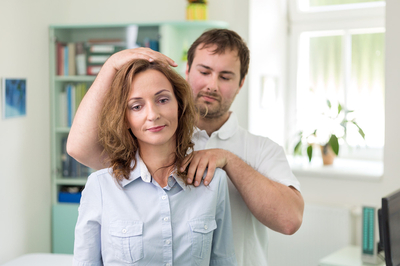A good back is hard to find
31. 5. 2019 -
Why do increasingly more people have back pain? We asked Tomáš Vilhelm, a physician at Velké Losiny Thermal Spa. Nearly one in two people worldwide have at one time suffered from back pain. Experts even contend that just one in a hundred people has a truly healthy back.
Why do increasingly more people have back pain?
The problem is that specialists are too focused on their own fields of medicine. As a result, we often learn that the patient's complaints are not rheumatologic in origin, have no orthopaedic cause and neurologists do not find any nerve root irritation. Medical imaging such as computed tomography (CT) and x-rays often only find common growths. On paper we're healthy, but we're still in pain.
Could you be more specific?
Among people of productive age, back pain is triggered by changes in muscle stress, length and function. And muscles are a problem. The state and condition of a patient's muscles cannot be examined very well using medical imaging or laboratory methods. As a result, physicians depend on their own senses, especially touch.
So the causes of back pain may lie not only in poor sitting posture and ergonomics, but also muscular changes?
Yes. Changes in the length, stress and elasticity of muscle fibres are responsible for pain and are the cause of focal points of pain, also known as trigger points. The most frequent causes then tend to be sedentary lifestyles, muscle injuries, vitamin B and iron deficiencies and, above all, sustained periods of stress.
Can these trigger points be removed?
They can be by using several non-invasive methods, such as combined electrotherapy, stretching, deep-tissue massage and cryotherapy. Dry needling is another technique that is becoming more popular.
So why is the argument often made that poor posture is the sole cause of back pain?
Well, that's also true – one thing is connected to the other. Slouching in chairs is another cause of back pain. When the lumbar spine is curved, the spinal discs come under pressure. Though the discs are covered with an outer layer of strong cartilage, the centres are like jelly. When a person sits with their back arched, pressure is directed outward toward the spinal cord and motor neurons. This can result in chronic back pain, slipped discs and the need to undergo therapy or even surgery.
What would you recommend to treat sustained back pain?
One help may be regular deep massage of the back and neck muscles, which reduces muscle tension and alleviates pain while also improving circulation. Hydrotherapy is also efficacious, as is chiropractic therapy, which is effective in cases where there are abnormal movements due to improper posture or work positions. Chiropractors try to correct these movements by manipulating the spine, mobilising the joints and using solid tissue manipulation techniques.
OUR TIP - REHABILITATION PLUS
Rehabilitation stays serve mainly clients whose therapy requires intensive rehabilitation and a combination of several contemporary techniques – physiotherapy, manual therapy, physical therapy, movement therapy, dietary science, and therapy using curative mineral springs.
